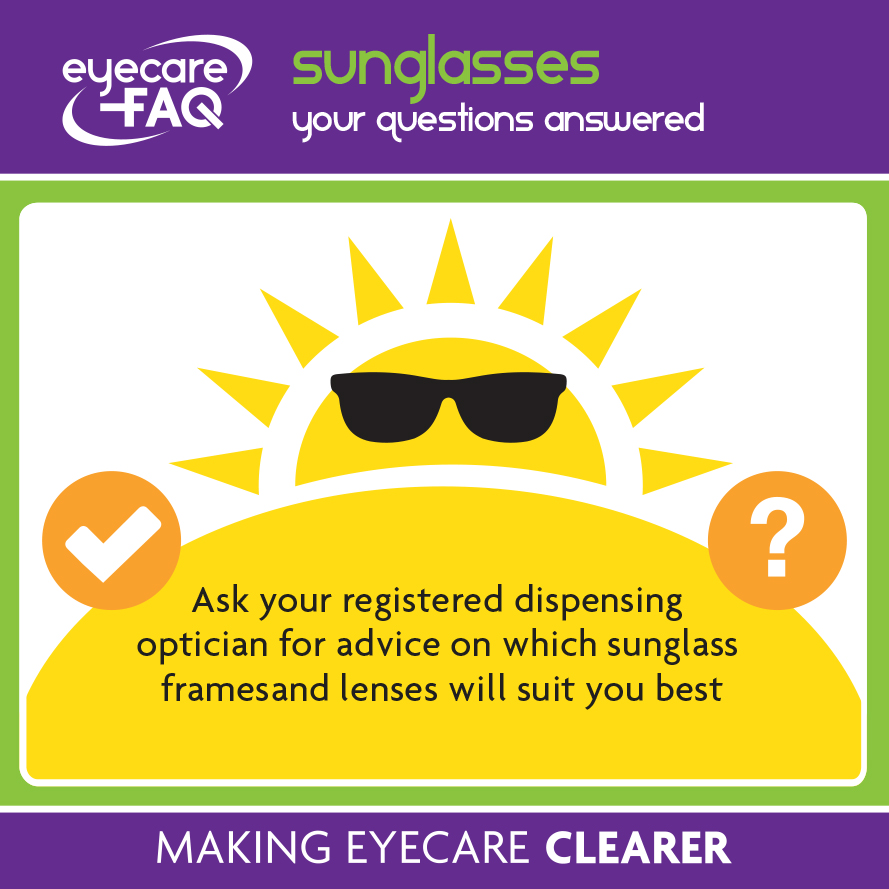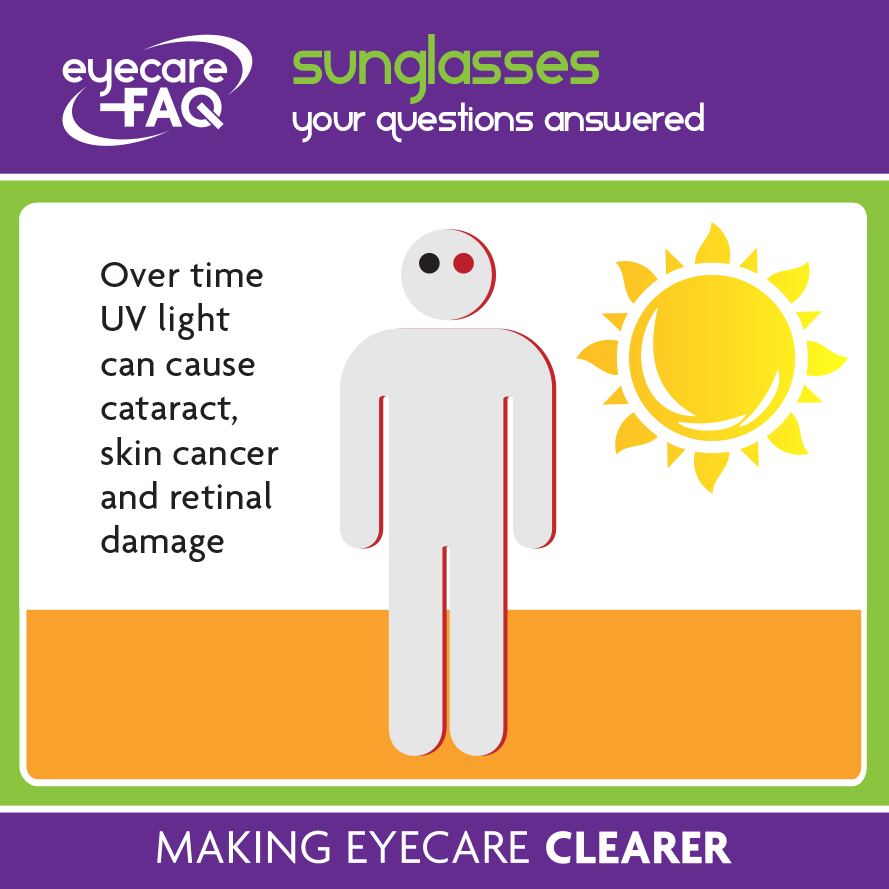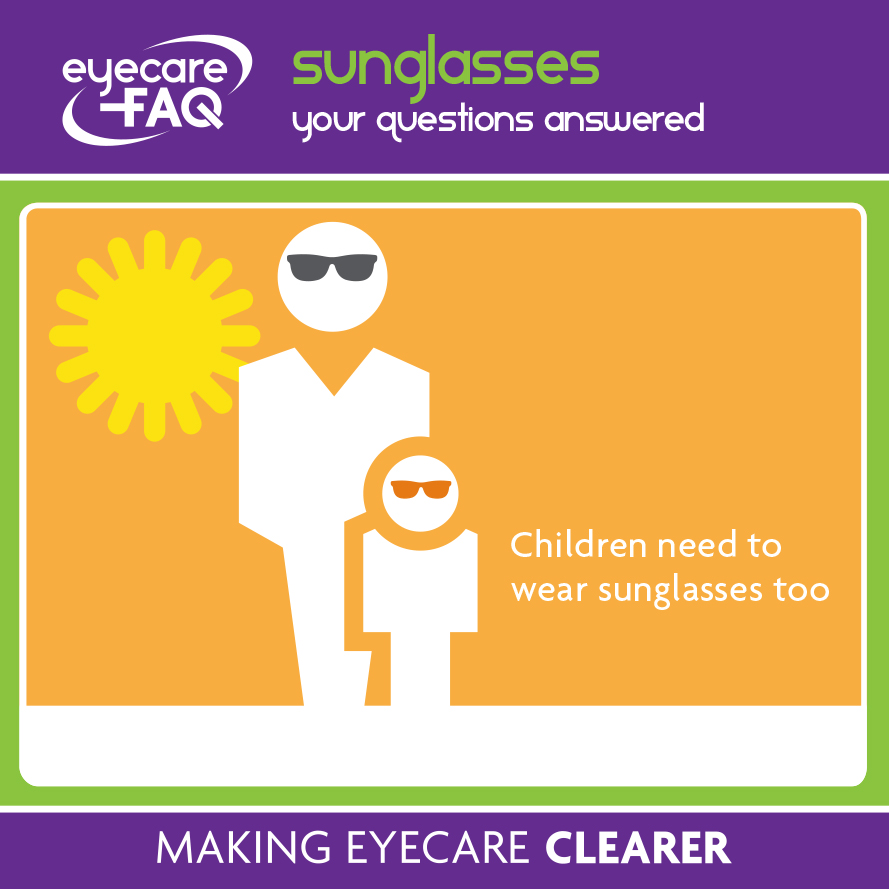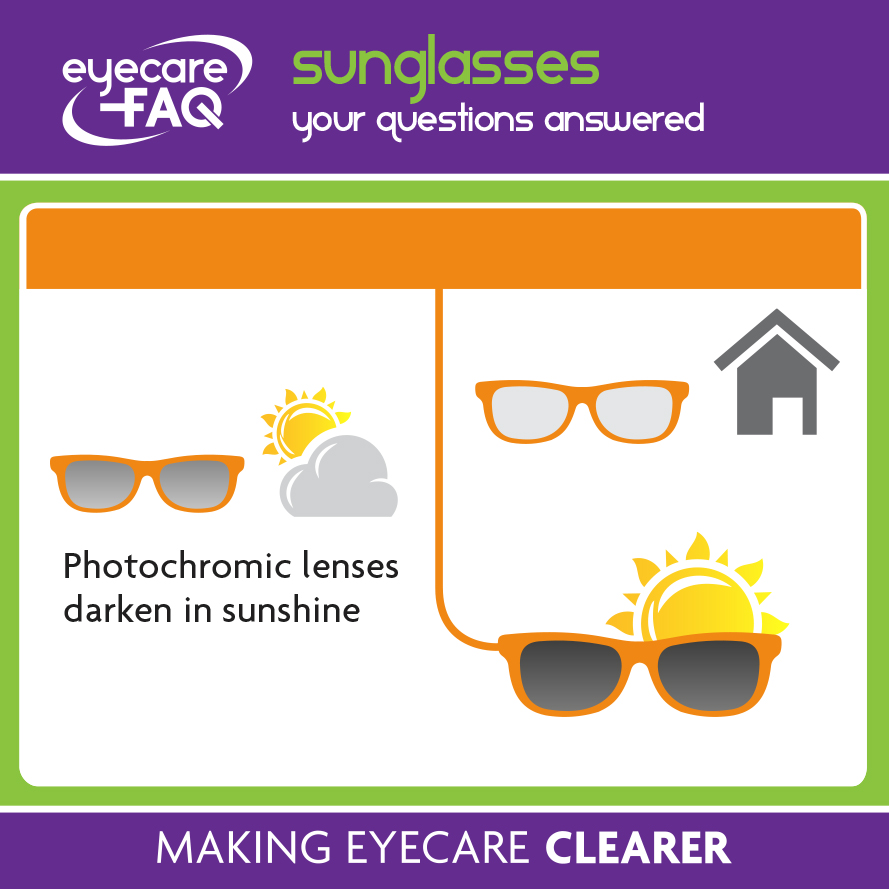Why should I wear sunglasses?
Sunglasses protect your eyes from the harmful effects of UV light … and they can look great too!
What is UV light and why is it harmful?
UV (Ultraviolet) rays come from sunlight. There are three types: UVA, UVB and UVC.
- UVA which is linked to possible cataract formation, skin cancer and/or retinal damage with long term exposure.
- UVB which can damage the clear layers at the front of the eye, the cornea and conjunctiva, and the crystalline lens inside the eye. ‘Snow-blindness’ is extreme photo-keratitis caused by UVB.
- UVC is absorbed by the ozone layer and does not reach the earth.
Do my children need to wear sunglasses too?
Children need to protect their eyes from UV just as much as adults do. Very small children and babies should not be in the sun at all: according to the NHS toddlers and older should wear sun cream, a hat and loose, baggy cotton clothes, such as an oversized T-shirt with sleeves. Protect your child’s eyes with sunglasses that meet the British Standard (BSEN 1836:2005) and carry the “CE” mark. Check the label or ask a registered dispensing optician for advice.
I wear glasses all the time: what are my options for sunglasses?
You have a number of choices. Sunglasses can be made to your normal optical prescription. You can choose the colour and depth of tint: most people opt for brown or grey but a whole range of colours are available. Some frames suit clip on sunglasses. You might also opt for photochromic lenses that darken in sunshine. Ask your registered dispensing optician for advice on which option will suit you best.
How do I choose a good pair of sunglasses?
Sunglasses need to fit your face well in order to be effective at stopping UV light, so make sure that you get advice when choosing. Always look for the CE mark when buying lenses. Speak to a registered dispensing optician for advice on prescription sunglasses and fitting.
What marking should I look for on a good pair of sunglasses?
Non-prescription sunglasses must meet the British Standard (BSEN 1836:2005). Prescription sunglasses should comply with BS EN ISO 12312-1:2013. All sunglasses should carry the “CE” mark. Check the label and ask your registered dispensing optician if you are unsure.
What sunglasses are best for driving?
Most sunglasses are suitable for driving in daytime apart from those with a very dark tint. An anti-reflection coat is a must. A mirror coating on polarised lenses is a very good driving/road use tint, especially in wet conditions on a bright/sunny day. Ask your registered dispensing optician about lenses (for daytime use only), which combine photochromic technology with polarisation.
Will polycarbonate lenses protect my eyes from UV light?
Where safety or wrap around glasses are needed polycarbonate is commonly used. Polycarbonate, in white form, eliminates 100% of UV light and is stronger than regular plastic lenses. Speak to a registered dispensing optician to find out if this type of lens will suit you.
Should I get polarised lenses?
Polarised lenses which are the only truly anti-glare lenses are great for use on and around water (fishing, sailing, water skiing etc). A mirror coating on polarised lenses will counteract the increased UV being reflected from the water if you are out all day. Ask your registered dispensing optician about lenses (for daytime use only), which combine photochromic technology with polarisation.
Do photochromic lenses make good sunglasses?
Photochromic lenses go dark in sunlight. They are great if you are generally light sensitive and if you prefer lenses that darken automatically to having to put sunglasses on and off. People with conditions such as albinism find photochromic lenses essential. Speak to a registered dispensing optician
If I am wearing sunglasses is it safe to look at the sun?
It is never safe to look at the sun, even with sunglasses on.





